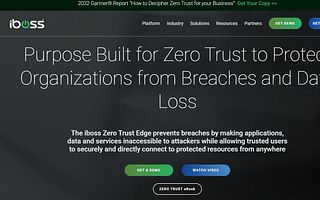Maya Braun is a seasoned expert in the realm of cryptography, driven by a profound interest in data privacy. Her professional journey has been dedicated to the design and development of secure communication systems, while also being a vocal advocate for digital rights. Maya takes pleasure in penning down her thoughts on the latest breakthroughs in cryptography and their potential impacts on privacy.
After a security breach has occurred, it's important to remain calm and take immediate action. Acting swiftly and decisively is crucial to minimizing the impact of the breach. Here's what you should do:
Identify and Contain the Breach: Start by identifying the source of the breach and isolate affected systems or accounts. This will help limit the damage and prevent further unauthorized access. You can find more information on how to do this here.
Assess the Impact and Damage: Evaluate the extent of the breach, including what data has been compromised and how it could be used by malicious parties. Understanding the scope of the breach will inform your response and recovery efforts. You can learn more about the potential consequences of a breach here.
Report the Breach: It's essential to report the breach to the necessary parties. This may include internal teams, law enforcement, affected customers or clients, and regulatory bodies if required. Reporting the breach helps ensure appropriate actions are taken and assists in preventing future incidents. You can find more about what to do in case of a security breach here.
Recovery and Prevention: Safely restore systems and data, and strengthen security measures to prevent future breaches. This may involve conducting penetration testing, reviewing security protocols, and implementing necessary changes to safeguard your digital assets. For more tips on how to prevent future breaches, check out this guide.
Remember, taking immediate action and following these steps will help mitigate the effects of a security breach. Stay vigilant and prioritize the security of your systems and data.
First Step: Spot the Breach and Put it on Lockdown 🔒
Start by staying calm and acting quickly. Fast and decisive action is crucial to lessen the impact of a security breach. Now, let's figure out and control the breach to minimize the harm.
First, you need to pinpoint the source of the breach. Carry out a detailed investigation to figure out how the breach happened and which systems or accounts are affected. This will help you grasp the full scope of the damage and formulate an effective containment plan. For more information on how to respond to a security incident, you can check here.
To control the breach, separate the affected systems or accounts. This might mean disconnecting compromised devices from the network, changing passwords, or temporarily shutting down affected services. By controlling the breach, you stop further unauthorized access and limit the possible damage. If you are unsure about how to protect your online accounts from cyber hacking, you can find some tips here.
Remember, every second matters when dealing with a security breach. Act swiftly to pinpoint and control the breach, and you'll be one step closer to restoring security and safeguarding your data. For more tips on how to ensure digital security, check out this guide.
Next, Let's Evaluate the Fallout: What Did the Breach Cost You? 💻
After a security breach, it's crucial to understand the scope of the breach and the compromised data. This step is key to understanding the potential risks and how hackers might use the stolen information. You can learn more about this process here.
Assessing the breach's impact helps you grasp the situation's severity. Knowing the compromised data, like personal info or business data, lets you anticipate threats and act accordingly. You can learn more about how to protect your data here.
Think about the fallout if this data lands in the wrong hands. Hackers could use it for identity theft, financial fraud, or corporate espionage. Evaluating the breach's extent helps you understand the risks and take steps to limit more damage.
Remember, quick and decisive action is key to lessening a security breach's effects. By understanding the breach's scope, you can act to protect yourself, your customers, and your business from more harm. You can learn more about this here.
Time to Sound the Alarm: Reporting Your Breach 🚨
Start by advising the readers to remain calm and take immediate actions. Emphasize that swift, decisive action is the key to mitigating the effects of a security breach.
Identify the source of the breach and contain it to limit the damage. Isolate affected systems or accounts to prevent further compromise.
Assess the impact and damage caused by the breach. Evaluate what data has been compromised and how it could potentially be used by malicious parties. You can find more information on the difference between a security breach and a data breach here.
Report the breach to the necessary parties. This includes internal teams, law enforcement, affected customers or clients, and regulatory bodies if required. Reporting ensures that appropriate actions are taken to address the breach and protect those affected.
Recover and prevent future breaches. Safely restore systems and data, and strengthen security measures to prevent similar incidents in the future.
Remember, taking immediate action, containing the breach, assessing the impact, and reporting to the necessary parties are crucial steps to minimize the damage caused by a security breach.
Bouncing Back: Recovering and Fortifying Your Digital Fortress 🏰
Start by remaining calm and taking immediate action. Swift and decisive action is key to mitigating the effects of a security breach. Identify the source of the breach and contain it to limit the damage. Isolate affected systems or accounts to prevent further compromise.
Assess the impact and damage by evaluating the extent of the breach. Determine what data has been compromised and how it could potentially be used by malicious parties.
Report the breach to the necessary parties, including internal teams, law enforcement, affected customers or clients, and regulatory bodies if required. Transparency is crucial in these situations.
To restore systems and data safely, follow best practices and consider engaging in penetration testing to identify vulnerabilities. Strengthen security measures to prevent future breaches by implementing robust security protocols, regularly updating software, and educating employees on cybersecurity best practices.
Remember, recovering from a security breach is a process. Stay vigilant, adapt your security measures, and learn from the experience to fortify your digital fortress.
Understanding Steps to Take After a Security Breach
This quiz will test your understanding of the steps to take following a security breach.
Learn more about 🔒 Understanding Steps to Take After a Security Breach or discover other HackerDesk quizzes.















